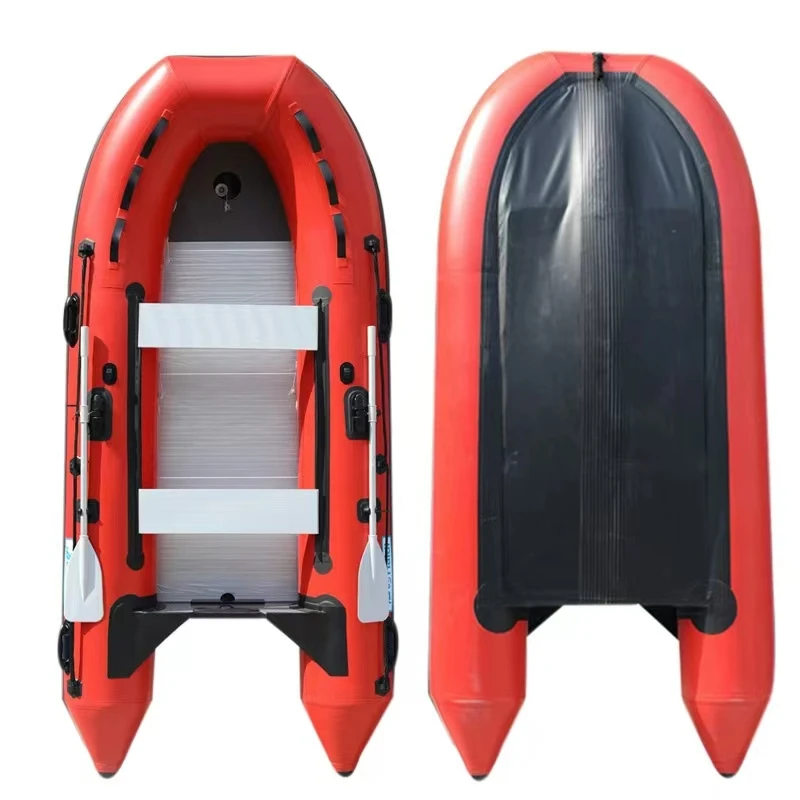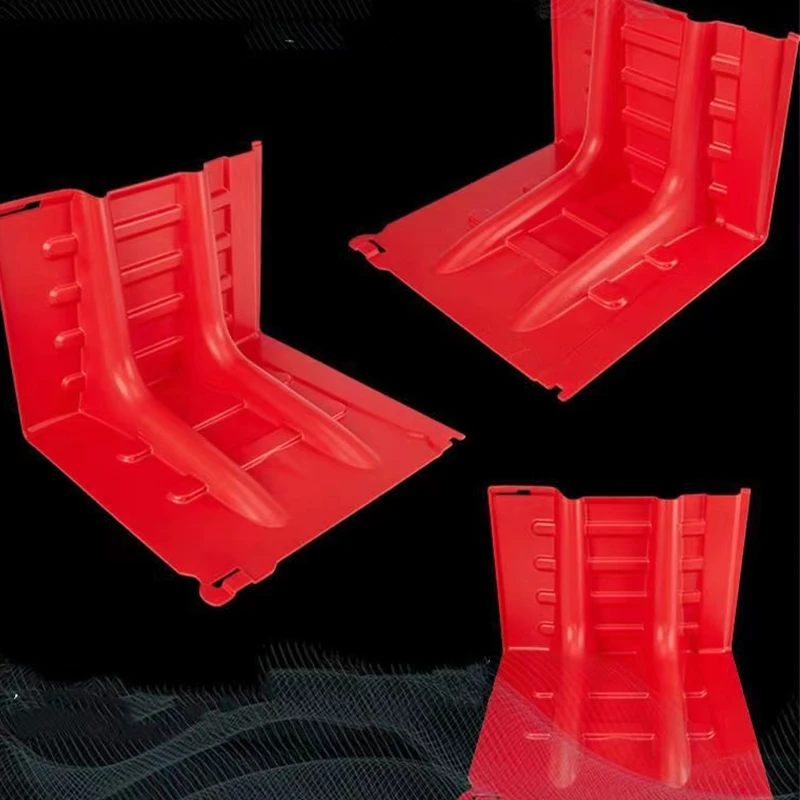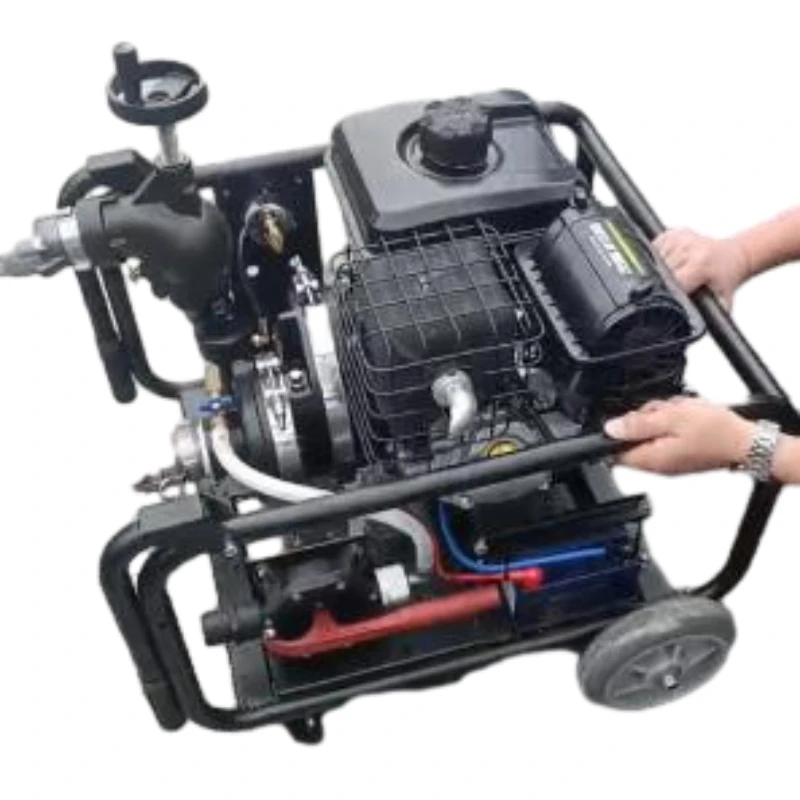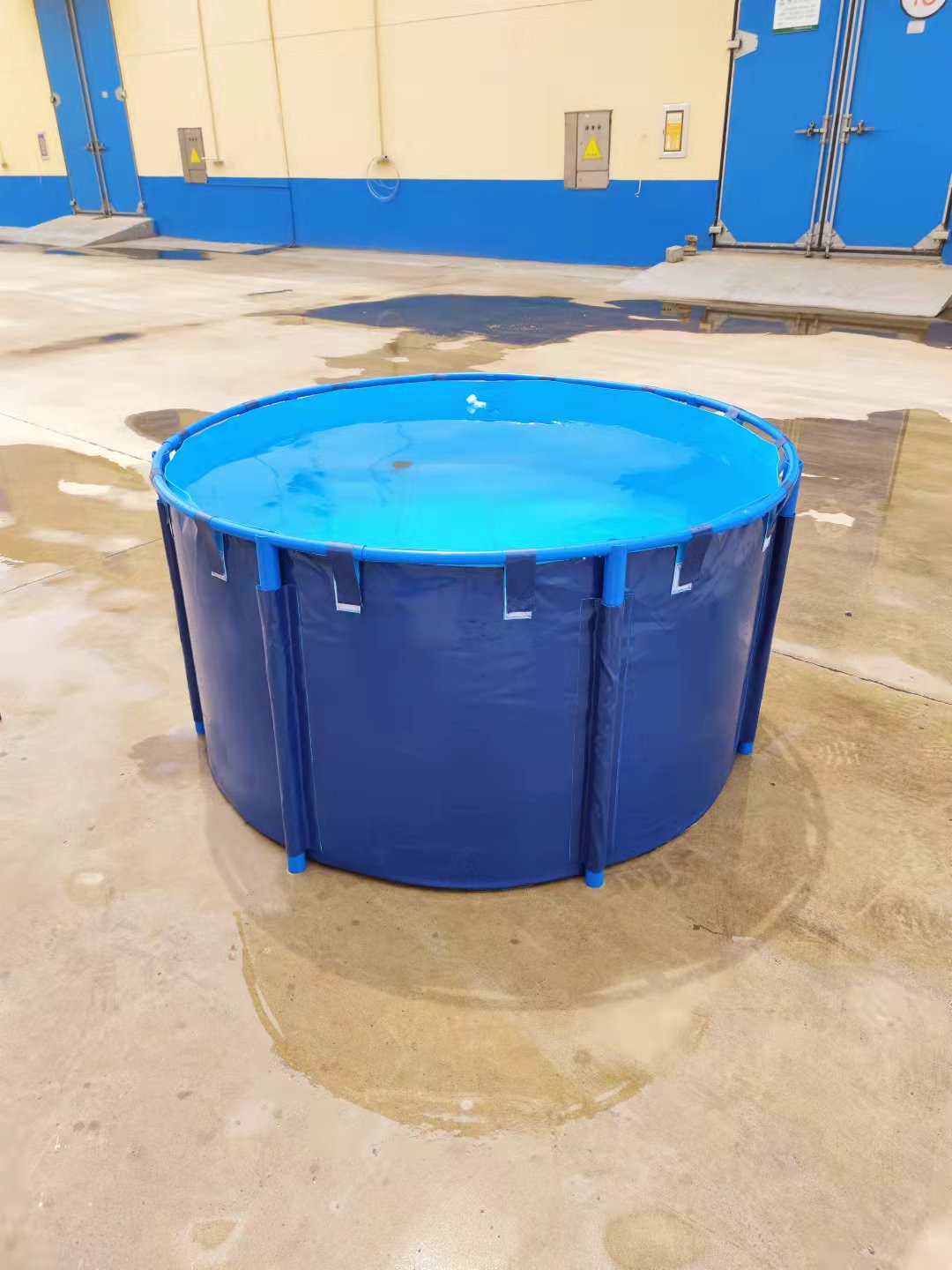Industry Trends in High-Pressure Fire Safety Solutions
The landscape of industrial safety, particularly in fire suppression, is undergoing significant evolution. With increasing complexities in infrastructure and operations, the demand for highly reliable, efficient, and flexible fire fighting equipment has never been more critical. Modern challenges like rapid urban development, industrial expansion into remote areas, and the imperative for quick disaster response necessitate advanced solutions beyond static fire systems. The trend points towards mobility, enhanced pressure capabilities, and intelligent integration for proactive and reactive fire management.
Key trends include the adoption of automation, data analytics for predictive maintenance, and the integration of IoT sensors for real-time monitoring. Furthermore, environmental considerations are driving innovations towards more efficient pump designs, lower emissions, and the use of sustainable materials. These trends collectively elevate the performance requirements for all fire suppression components, emphasizing robust construction and dependable operation under extreme conditions. The integration of advanced diagnostics and remote control features is also becoming standard, allowing for more precise management and reduced human exposure to hazardous environments during emergencies.
Introducing the Movable high pressure fire water pump
At the forefront of these advancements is the Movable high pressure fire water pump. Engineered for rapid deployment and formidable performance, this category of pump is indispensable in scenarios where immediate, powerful water delivery is paramount. Unlike fixed installations, its mobility allows for strategic positioning, adapting to various fire incidents across diverse terrains and infrastructure layouts. These pumps are designed to deliver water at pressures significantly higher than conventional fire pumps, capable of reaching elevated points or penetrating dense smoke and debris with greater efficacy. They typically incorporate powerful diesel engines and robust pump heads, often multi-stage centrifugal, to achieve these demanding hydraulic parameters.
Targeting demanding industries such as petrochemical, metallurgy, mining, and large-scale manufacturing, a Movable high pressure fire water pump provides crucial flexibility. Its robust construction ensures reliable operation in hazardous environments, offering an essential layer of protection where speed and adaptability are non-negotiable. Furthermore, their self-priming capabilities mean they can draw water from virtually any available source, from municipal hydrants to natural bodies of water, significantly expanding their operational range.
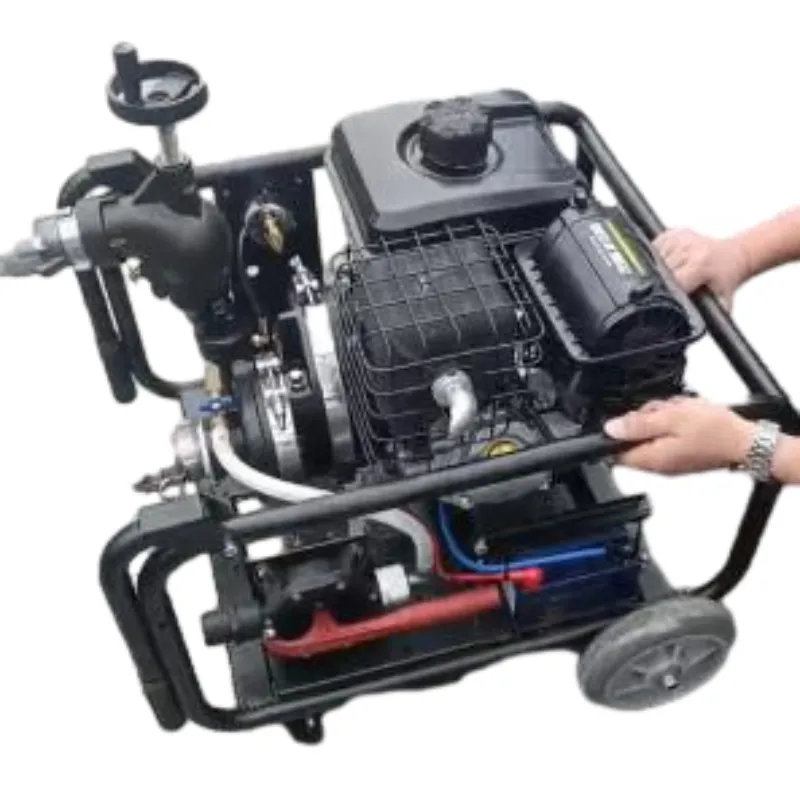
Figure 1: Typical deployment of a Movable high pressure fire water pump in an industrial setting.
Manufacturing Process and Quality Assurance
The production of a high-performance Movable high pressure fire water pump involves a meticulously controlled manufacturing process, adhering to stringent quality standards to ensure exceptional reliability and longevity in critical fire safety applications.
Key Process Steps:
- Material Selection: Components are crafted from high-grade, corrosion-resistant materials such as marine-grade stainless steel (e.g., SS316L for impellers, wear rings, and shafts), specialized ductile iron or bronze alloys for pump casings, and robust high-tensile steel for chassis and structural elements. These materials are chosen for their resilience against harsh environments, including saltwater, chemical exposure, and extreme operating temperatures. All materials are sourced from certified suppliers with complete traceability.
- Precision Casting & Forging: Key pump hydraulic components like impellers, diffusers, and casings undergo precision casting or forging processes. Investment casting ensures complex geometries with optimal fluid dynamics and minimal cavitation, while forging enhances material strength, density, and fatigue resistance for critical parts subjected to high stress and continuous operation.
- CNC Machining: State-of-the-art CNC (Computer Numerical Control) machining centers are utilized to achieve micron-level tolerances and superior surface finishes for all moving parts, including shaft bores and impeller vanes. This precision is vital for minimizing internal leakage, optimizing hydraulic efficiency (reducing energy consumption), and ensuring smooth, vibration-free operation at high RPMs.
- Integrated Assembly: Skilled and certified technicians meticulously assemble the pump components, integrating them with the chosen diesel engine, advanced control panels, and the robust trailer or skid-mounted chassis. Each sub-assembly, including mechanical seals, bearings, and lubrication systems, is inspected and tested for fit and function before final integration to prevent leaks and premature wear.
- Advanced Coating & Surface Treatment: Exposed metallic surfaces receive advanced anti-corrosion and anti-abrasion coatings (e.g., multi-layer epoxy primers, marine-grade polyurethane topcoats) to withstand aggressive atmospheric conditions, UV exposure, and prevent material degradation, significantly extending the operational lifespan.
- Rigorous Testing & Certification: Each finished unit undergoes comprehensive testing protocols in our ISO-certified test facilities. This includes hydrostatic pressure tests (up to 1.5 times working pressure), performance curve verification (flow, head, power consumption across the operating range), cavitation tests, and extended endurance runs (typically 4-8 hours). These tests strictly adhere to international standards such as ISO 9001 (Quality Management), NFPA 20 (Fire Pumps), and relevant ANSI/API standards, ensuring operational integrity, safety, and guaranteed performance.
Advantages in Typical Application Scenarios:
- Energy Saving: Through optimized hydraulic designs (e.g., highly efficient impellers and volutes) and pairing with fuel-efficient, often electronically governed, diesel engines, our pumps minimize fuel consumption while maximizing water delivery. This translates to significant operational cost savings over the unit's extensive service life, which typically exceeds 15-20 years with proper preventative maintenance.
- Corrosion Resistance: The meticulous selection of premium, certified materials and application of advanced, multi-layer coatings ensures exceptional resistance to corrosion, even when pumping seawater, brackish water, or chemically contaminated industrial wastewater. This drastically extends the operational lifespan, reduces component failure rates, and minimizes maintenance frequency, especially crucial in target industries like petrochemical and marine.
- Target Industries: These pumps are ideally suited for petrochemical plants, steel mills, power generation facilities, offshore platforms, large construction sites, municipal water supply & drainage departments, and emergency response units. In these sectors, the demand for robust, reliable, and adaptable fire suppression and dewatering solutions in demanding conditions is paramount, making our product an indispensable asset.
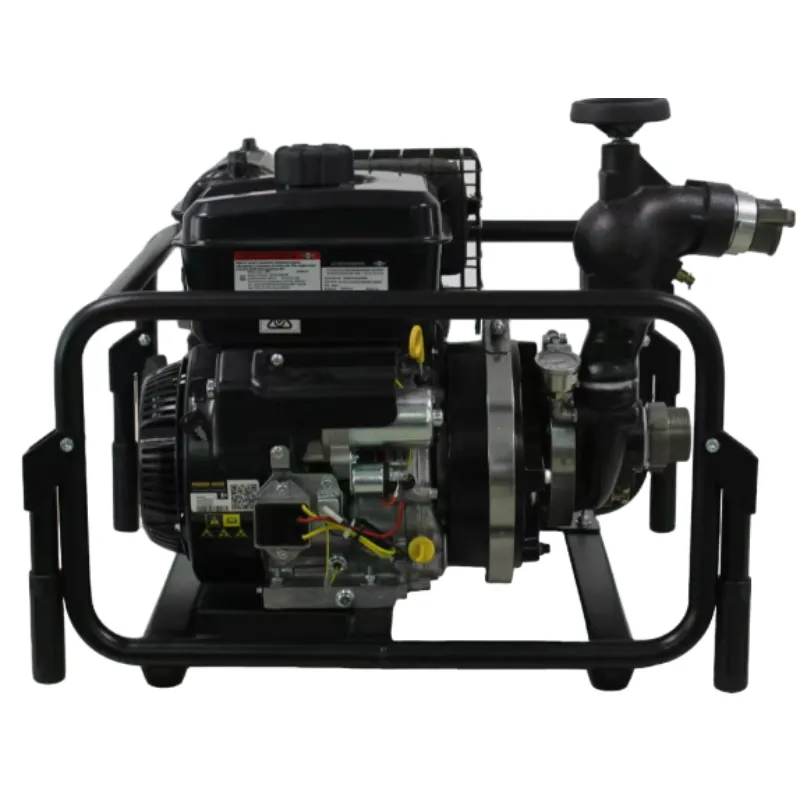
Figure 2: Precision engineering of pump components during the manufacturing process.
Key Technical Specifications
A thorough understanding of the technical specifications of a Movable high pressure fire water pump is crucial for effective selection, integration, and deployment. These precise parameters dictate the pump's performance, hydraulic efficiency, and overall suitability for specific operational demands in various industrial and emergency contexts.
Typical Product Specifications for a High-Performance Unit:
| Parameter | Description | Typical Range/Value |
|---|---|---|
| Pump Type | Multi-stage end-suction or split-case centrifugal pump for high pressure | Horizontal / Vertical Centrifugal |
| Flow Rate | Maximum water output capacity at rated pressure | Up to 3000 m³/h (13,200 GPM) |
| Discharge Pressure (Head) | Maximum pressure at the discharge outlet, crucial for long-distance delivery or high-rise applications | 1.0 MPa to 2.5 MPa (10-25 Bar, 145-360 PSI) |
| Engine Type | Robust industrial diesel engine for independent operation | Diesel engine (Cummins, Perkins, Weichai, etc.) |
| Engine Power | Rated power output of the prime mover | 50 kW to 600 kW (67 HP to 800 HP) |
| Fuel Tank Capacity | Integrated fuel storage for extended run-time | 200 L to 1000 L (for 8-24 hours continuous operation) |
| Suction Lift | Maximum vertical distance for drawing water from source | Up to 7 meters (with integral vacuum prime assist) |
| Mobility Platform | Type of chassis for transportation | Heavy-duty trailer-mounted (single or dual axle), skid-mounted, container111ized |
| Control System | Advanced operational interface and automation | PLC-based with auto-start, pressure regulation, remote monitoring, fault diagnostics, manual override |
| Compliance | Relevant international and national industry standards | NFPA 20, ISO 9001, CE, ATEX (optional), local fire codes |
Note: These specifications represent typical high-end values and can vary significantly based on specific models, engine configurations, and client-customized requirements.
Application Scenarios and Industry Impact
The versatility and robust performance of a Movable high pressure fire water pump make it an invaluable asset across a spectrum of critical industries and emergency response situations. Its capacity for rapid deployment and high-volume, high-pressure water delivery addresses unique operational challenges where fixed systems may be impractical or insufficient.
Typical Application Scenarios:
- Petrochemical and Oil & Gas Facilities: Crucial for suppressing large-scale fires involving flammable liquids and gases, where high pressure is needed to overcome vapor barriers, effectively cool storage tanks, and deliver foam concentrates over significant distances. Their mobility allows rapid repositioning to contain spreading fires or protect adjacent critical infrastructure.
- Power Plants and Energy Sector: Essential for cooling critical infrastructure such as turbine halls, suppressing coal pile fires, or protecting large transformer stations where high-pressure water mist or direct streams are required. The ability to draw water from various sources (cooling ponds, rivers) enhances their utility in these large, often remote, sites.
- Marine and Offshore Operations: Used on large vessels, dry docks, port facilities, and offshore platforms as primary or secondary fire suppression units, particularly for high-rise marine structures, complex ship fires, or dewatering operations during incidents. Their robust construction is vital in harsh marine environments.
- Mining and Tunnelling: In remote or confined underground spaces, these pumps provide robust fire protection and essential dewatering capabilities. High pressure helps to clear debris, flush tunnels, and deliver water effectively over long distances or up shafts where conventional systems struggle with head loss.
- Large Industrial Complexes: Manufacturing plants, expansive warehouses, and logistics centers benefit from the flexibility of mobile units, which can quickly supplement fixed systems, act as the primary response in areas without permanent fire mains, or provide temporary fire protection during maintenance or construction.
- Municipal Fire & Emergency Services: Augment existing fire truck fleets, especially during major incidents, natural disasters (e.g., floods requiring extensive dewatering followed by fire suppression), or when static water sources are remote or infrastructure is compromised. They provide vital pumping capacity for mutual aid agreements.
The impact of these pumps extends beyond direct fire suppression, contributing significantly to business continuity, asset protection, and overall operational safety in high-risk environments, minimizing potential financial losses and environmental damage.

Figure 3: A Movable high pressure fire water pump deployed at an industrial site for emergency response.
Technical Advantages and Performance Metrics
The distinct technical advantages of a Movable high pressure fire water pump are rooted in its specialized design and precision engineering, offering superior performance compared to standard fire pumps in critical, rapidly evolving situations.
Key Technical Advantages:
- Exceptional Pressure Output: Designed to generate significantly higher discharge pressures (up to 2.5 MPa or 360 PSI), enabling water jets to reach greater heights and distances, penetrating deep into large-scale fires or cooling vast industrial structures more effectively. This also allows for the efficient use of smaller diameter hoses over longer distances without significant pressure loss, optimizing logistical operations.
- Rapid Deployment and Mobility: Mounted on robust, often DOT-compliant, trailers or heavy-duty skids, these pumps can be swiftly transported to the incident site, regardless of existing fixed infrastructure availability. This rapid response capability is critical in mitigating early-stage fire growth, containing chemical spills, and minimizing overall damage to assets and the environment.
- Advanced Self-Priming Capabilities: Many models incorporate sophisticated vacuum-assisted self-priming mechanisms, allowing them to draw water efficiently from natural sources like rivers, lakes, or retention ponds from depths of up to 7 meters (23 feet) without external assistance. This ensures reliable water access in remote areas or where municipal hydrants are insufficient or damaged.
- Robust Construction for Hazardous Environments: Built with heavy-duty components, often housed in weather-resistant, acoustically insulated enclosures, these pumps are engineered to operate reliably in harsh conditions including extreme temperatures (from -30°C to +50°C), dusty atmospheres, highly corrosive environments (e.g., coastal, chemical plants), and high humidity, which are common in industrial and disaster response settings.
- Automated Control and Monitoring: Equipped with sophisticated PLC (Programmable Logic Controller)-based control systems that offer fully automatic starting, precise pressure regulation, comprehensive engine monitoring (oil pressure, coolant temperature, RPM), and advanced fault diagnostics. This ensures optimal performance with minimal operator intervention and provides crucial real-time data for both operational control and predictive maintenance.
- Versatile Water Source Compatibility: Capable of reliably pumping various water types, including fresh water, brackish water, and even seawater, thanks to specialized material selection and coating systems. This makes them highly adaptable to diverse geographical and environmental constraints faced during emergency operations.
Performance Metrics and Benchmarking:
Performance of these pumps is typically benchmarked against critical metrics such as actual flow rate at various discharge pressures (e.g., 2000 GPM at 175 PSI), net positive suction head required (NPSHr), fuel efficiency (liters per hour at rated load, often 0.2-0.3 L/kW-hr for modern diesels), noise levels (e.g., 85 dB at 7 meters), and mean time between failures (MTBF). Advanced pumps feature optimized impeller and volute designs combined with electronically managed diesel engines (often Tier 3/4 Final compliant for emission control) to maximize hydraulic efficiency and minimize operational costs while adhering to environmental regulations. For instance, a unit delivering 1000 m³/h at 1.5 MPa might have a specific fuel consumption rate of approximately 80-120 L/hr, depending on the engine model and prevailing load conditions, highlighting the balance between power and economy.
Vendor Comparison and Selection Criteria
Choosing the right provider for a Movable high pressure fire water pump requires careful consideration of various factors beyond just initial purchase cost. A strategic comparative analysis ensures long-term reliability, comprehensive support, and strict compliance with operational and safety standards, directly impacting the total cost of ownership (TCO) and emergency response effectiveness.
Key Selection Criteria for B2B Procurement:
- Performance & Specifications: Critically assess and match the proposed flow rate, discharge pressure, engine power, and self-priming capabilities against specific operational requirements and worst-case fire scenarios. Verify performance curves against manufacturer data.
- Material Quality & Construction: Evaluate the use of certified corrosion-resistant materials (e.g., SS316, duplex stainless steel, marine bronze, high-grade ductile iron) for pump wetted parts and the robustness of the chassis and enclosure design for long-term durability in anticipated operating environments.
- Certifications & Compliance: Ensure strict adherence to international safety and performance standards like NFPA 20, ISO 9001 (Quality Management), CE marking (for European markets), and relevant local fire safety regulations. Verify engine emission certifications (e.g., EPA Tier, EU Stage).
- After-Sales Support & Service Network: The availability of readily accessible spare parts, a well-trained technical assistance team, and a global or regional network of qualified service technicians is crucial for minimizing downtime and ensuring continuous operational readiness.
- Customization Options: The vendor's ability to tailor units for unique environmental conditions, specific site layouts, specialized fuel requirements, or integration with existing fire suppression systems is a significant advantage.
- Lead Time & Delivery: Evaluate the vendor's capacity to meet projected lead times, especially critical for urgent replacement needs or time-sensitive project deadlines.
- Reputation & Experience: A vendor's established track record, years of specialized experience in industrial fire safety, and verifiable client testimonials or case studies reflect their reliability and expertise.
Comparative Analysis (Illustrative Example):
| Feature/Vendor | Vendor A (e.g., FFW Fire Safety) | Vendor B (Competitor X) | Vendor C (Competitor Y) |
|---|---|---|---|
| Max Flow Rate (m³/h) | 2500 | 2000 | 1800 |
| Max Pressure (MPa) | 2.2 | 1.8 | 2.0 |
| Engine Brand Options | Cummins, Perkins, Weichai | Deutz, CAT | Volvo Penta, MTU |
| Compliance (Key) | NFPA 20, ISO 9001, CE, EPA/EU Stage | ISO 9001, CE | NFPA 20, ISO 9001 |
| Warranty (Years) | 2 (extendable) | 1 | 2 |
| Lead Time (Weeks) | 8-12 (standard), 12-16 (custom) | 10-14 | 12-16 |
| Self-Priming Feature | Standard (vacuum-assisted) | Optional | Standard (manual prime assist) |
| Global Service Network | Extensive (via engine partners & distributors) | Regional | Moderate |
Note: This table is illustrative and based on typical market offerings. Actual vendor specifications and offerings may vary and should be verified.
Customized Solutions for Unique Challenges
Recognizing that every industrial environment presents unique fire safety challenges, leading manufacturers offer extensive customization options for the Movable high pressure fire water pump. This bespoke approach ensures that the pump system is perfectly aligned with specific operational requirements, environmental conditions, and integration demands, providing optimized performance and maximum safety.
Key Customization Areas Include:
- Engine Selection & Emissions: Choice of specific diesel engine brands (e.g., Cummins, Perkins, Deutz, Weichai) and power outputs to meet local emission standards (e.g., EPA Tier 4 Final, EU Stage V) or specific fuel availability (e.g., alternative fuels). This includes integration of advanced exhaust after-treatment systems like DPF or SCR.
- Pump Materials of Construction: Selection of specialized materials for the pump casing, impeller, wear rings, and shaft to withstand highly corrosive fluids (e.g., super duplex stainless steel, Ni-resist, specific bronzes), abrasive slurries, or extreme temperatures.
- Chassis and Mobility Platform: Tailored trailer designs for specific terrains (e.g., off-road capability, larger tires, heavy-duty suspension, air brakes), robust skid-mounted options for semi-permanent fixed installations or seamless integration into other vehicles, or fully container111ized solutions for enhanced protection, easier transport, and rapid deployment.
- Advanced Control Systems & Telemetry: Integration of customized PLC systems with remote monitoring capabilities (SCADA, cellular/satellite communication), specialized alarm thresholds, multi-language HMI (Human-Machine Interface), and data logging for performance analysis and predictive maintenance.
- Auxiliary Equipment & Ancillaries: Addition of specialized accessories such as integrated foam proportioning systems (e.g., balanced pressure, inline inductors), various suction and discharge manifold configurations (e.g., Storz, ANSI, DIN), remote control fire monitors (water cannons), integrated lighting towers, extended fuel tanks, or advanced fuel filtration systems for challenging fuel qualities.
- Environmental Adaptations & Certifications: Special insulation packages for extreme cold weather operation, enhanced tropical cooling systems, noise attenuation enclosures for urban use, or explosion-proof certifications (e.g., ATEX/IECEx) for highly volatile and hazardous atmospheres.
This meticulous, bespoke approach ensures maximum efficiency, operational safety, and full compliance with the most stringent industry standards and client-specific requirements, providing a truly tailored and resilient fire protection solution.
Real-world Application Case Studies
The effectiveness and critical value of a Movable high pressure fire water pump are best illustrated through its successful deployment and tangible impact in challenging real-world scenarios. These case studies highlight the adaptability and reliability of such specialized equipment.
Case Study 1: Coastal Chemical Plant Fire Response – Preventing Catastrophic Spread
A major petrochemical facility located near a coastline experienced a rapidly escalating fire in one of its storage tank farms, involving highly flammable solvents. Due to the high salinity of the local seawater sources and the corrosive nature of the chemicals involved in the incident, specialized equipment was immediately required. A custom-built Movable high pressure fire water pump, featuring SS316L wetted parts, an advanced marine-grade anti-corrosion coating, and an integrated foam proportioning system, was rapidly deployed within 45 minutes of the alarm. Drawing water directly from the sea through a specialized suction hose, the pump delivered an impressive 2200 m³/h at 1.8 MPa through multiple high-reach monitors. This powerful water and foam delivery effectively cooled adjacent tanks, suppressed the spreading fire, and created a critical firebreak, ultimately preventing a catastrophic cascade effect and saving millions in potential damages. The pump operated continuously for 72 hours, demonstrating its robust design and exceptional reliability in an extreme, high-stakes environment.
Case Study 2: Remote Mining Site Protection – Rapid Equipment Salvage
A large open-pit mining operation in a remote, arid region of Australia required enhanced fire protection for its fleet of heavy machinery and processing units, particularly during dry seasons. Existing fixed fire mains were inadequate for the vast distances and scattered nature of the operations. A trailer-mounted Movable high pressure fire water pump with robust off-road capabilities, an extended 750L fuel tank, and a powerful 350 kW Cummins diesel engine was procured as a mobile rapid intervention unit. During a significant equipment fire involving a large haul truck, the unit was swiftly towed over rough terrain to the incident location, drawing water from a temporary onsite reservoir. Its high-pressure output (1.5 MPa) allowed firefighters to deliver a concentrated water stream effectively over a 600-meter distance, quickly bringing the intense blaze under control and minimizing equipment loss and operational downtime. The unit's ease of mobility and self-sufficiency across challenging terrain was a critical factor in its success, saving an estimated 5 million USD in asset replacement costs.
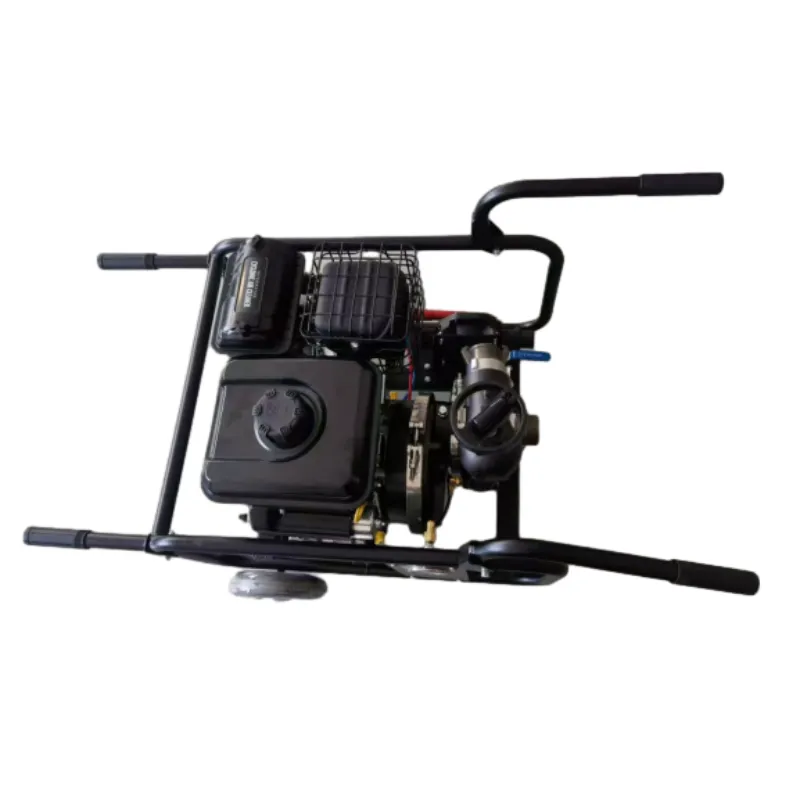
Figure 4: Mobile fire pump unit ready for emergency deployment and critical asset protection.
Authoritativeness & Trustworthiness: Certifications, Support & FAQ
Certifications and Partnerships:
At FFW Fire Safety, our unwavering commitment to excellence and reliability is fundamentally underscored by our strict adherence to international standards and strategic partnerships with global leaders in component manufacturing. Our comprehensive product portfolio, including the advanced Movable high pressure fire water pump series, consistently complies with and is often certified to stringent industry standards:
- ISO 9001:2015: Certified Quality Management System, ensuring rigorous control over design, manufacturing, and service processes for consistent product quality.
- NFPA 20: Designed and tested in accordance with the National Fire Protection Association's Standard for the Installation of Stationary Pumps for Fire Protection, with applicable principles extended to mobile units for performance assurance.
- CE Marking: Full compliance with relevant European Union safety, health, and environmental protection directives, facilitating deployment in EU member states.
- Engine Emission Certifications: Our integrated diesel engines meet global environmental standards such as EPA Tier 3/4 Final (USA) or EU Stage IIIA/IIIB/V, ensuring responsible operation.
We proudly collaborate and partner with industry-leading manufacturers for critical components, including Cummins, Perkins, Deutz, and Weichai for robust and globally supported diesel engines. This ensures not only superior performance but also global availability of spare parts and localized technical service, fortifying our promise of uninterrupted operation. Our extensive experience, spanning over two decades in specialized industrial fire safety solutions, further solidifies our position as a trusted and authoritative provider in the global market.
Frequently Asked Questions (FAQ):
Q: What is the typical service life expectancy of your movable high pressure fire water pumps?
A: With diligent adherence to recommended maintenance schedules, use of genuine spare parts, and proper operational procedures, our pumps are robustly engineered for a service life typically exceeding 15-20 years, even in challenging industrial and emergency environments. Regular preventative maintenance is absolutely critical to achieving this extended longevity and ensuring optimal performance.
Q: Can these pumps effectively handle highly corrosive fluids like seawater or industrial effluents?
A: Yes, our pumps are specifically designed with customization options to handle corrosive fluids. We offer configurations with specialized corrosion-resistant materials, such as marine-grade stainless steel (e.g., SS316L, duplex stainless steel) for all wetted parts, and apply advanced, multi-layer anti-corrosion coatings for exposed surfaces, making them exceptionally suitable for seawater, brackish water, and certain industrial chemical solutions.
Q: What level of training and technical support is provided for operators and maintenance personnel?
A: We offer comprehensive operational, safety, and maintenance training programs tailored to your team's needs. These can be conducted either on-site at your facility or at our dedicated training centers. The programs cover safe and efficient operation, routine inspections, advanced troubleshooting techniques, and preventative maintenance procedures to ensure your personnel are fully competent and confident in managing the equipment.
Lead Time, Warranty, and Customer Support Commitments:
- Lead Time: For our standard, readily available models, the typical lead time ranges from 8-12 weeks from confirmed order and receipt of payment. For highly customized units with specialized material or component requirements, the lead time may extend to 12-16 weeks, depending on the complexity of specifications and international sourcing schedules.
- Warranty: All new Movable high pressure fire water pump units are backed by a robust standard 12-month or 2000-hour (whichever milestone is reached first) warranty against manufacturing defects in materials and workmanship. Extended warranty options are available upon request to provide additional peace of mind. Specific engine components are covered under the respective engine manufacturer's global warranty terms.
- Customer Support: Our dedicated after-sales support team provides 24/7 technical assistance through multiple channels, including remote diagnostics, detailed troubleshooting guidance, and expedited spare parts ordering. We maintain a robust global network of factory-certified service partners and distributors to ensure prompt, expert on-site support and maintenance services wherever our equipment is deployed, minimizing any potential operational downtime.
Conclusion
The Movable high pressure fire water pump stands as an indispensable and critical asset in modern industrial and emergency fire safety paradigms. Its unparalleled combination of rapid mobility, formidable high-pressure output, exceptionally robust construction, and highly adaptable design addresses the increasingly complex and evolving challenges of fire suppression in demanding, often hazardous, environments. By prioritizing precision manufacturing, adhering to rigorous international testing and certification standards, and offering comprehensive, proactive customer support and customization, manufacturers like FFW Fire Safety ensure these essential units provide reliable, efficient, and ultimately effective protection for critical assets, personnel, and environmental integrity. Investing in a high-quality movable high-pressure fire water pump is not merely a purchase; it is a strategic investment in resilient operational safety, business continuity, and profound peace of mind for high-risk industrial operations worldwide.
References:
- National Fire Protection Association (NFPA) 20: Standard for the Installation of Stationary Pumps for Fire Protection. www.nfpa.org
- International Organization for Standardization (ISO) 9001: Quality Management Systems – Requirements. www.iso.org
- U.S. Environmental Protection Agency (EPA): Diesel Engines and Emissions Regulations. www.epa.gov
- Journal of Fire Protection Engineering, Volume 30, Issue 1, February 2020, "Performance Assessment of Mobile Fire Fighting Units in Industrial Settings".
- European Committee for Standardization (CEN): CE Marking Directives and Harmonized Standards. www.cencenelec.eu









